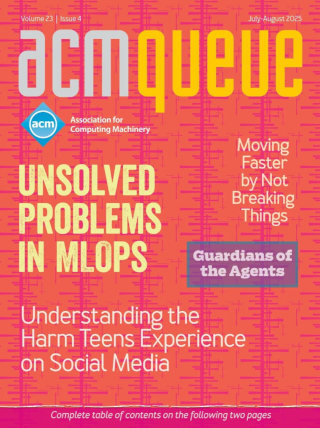
Coding for the Code:
Can models provide the DNA for software development?
Despite the considerable effort invested by industry and academia in modeling standards such as UML (Unified Modeling Language), software modeling has long played a subordinate role in commercial software development. Although modeling is generally perceived as state of the art and thus as something that ought to be done, its appreciation seems to pale along with the progression from the early, more conceptual phases of a software project to those where the actual handcrafting is done. As a matter of fact, while models have been found useful for documentation purposes and as rough sketches of implementations, their ultimate value has been severely limited by their ambiguity and tendency to get out of sync with the final code.
Vicious XSS:
For readers who doubt the relevance of KV’s advice, witness the XSS attack that befell MySpace in October.
For readers who doubt the relevance of KV’s advice, witness the XSS attack that befell MySpace in October. This month Kode Vicious addresses just this sort of XSS attack. It’s a good thing cross-site scripting is not abbreviated CSS, as the MySpace hacker used CSS to perpetrate his XSS attack. That would have made for one confusing story, eh?
Anything Su Doku, I Can Do Better:
The new puzzle craze from japan is sweeping the world, and testing our Boolean logic.
I dedicate this essay in memoriam to Jef Raskin. Many more authoritative tributes than I can muster continue to pour in, and no doubt a glorious Festschrift will be forthcoming from those who admired this remarkable polymath. "Le don de vivre a passé dans les fleurs."
A Conversation with Phil Smoot:
The challenges of managing a megaservice
In the landscape of today’s megaservices, Hotmail just might be Mount Everest. One of the oldest free Web e-mail services, Hotmail relies on more than 10,000 servers spread around the globe to process billions of e-mail transactions per day. What’s interesting is that despite this enormous amount of traffic, Hotmail relies on less than 100 system administrators to manage it all.
Monitoring, at Your Service:
Automated monitoring can increase the reliability and scalability of today’s online software services.
Internet services are becoming more and more a part of our daily lives. We derive value from them, depend on them, and are now beginning to assume their ubiquity as we do the phone system and electricity grid. The implementation of Internet services, though, is an unsolved problem, and Internet services remain far from fulfilling their potential in our world.
Lessons from the Floor:
The manufacturing industry can teach us a lot about measuring performance in large-scale Internet services.
The January monthly service quality meeting started normally. Around the table were representatives from development, operations, marketing, and product management, and the agenda focused on the prior month’s performance. As usual, customer-impacting incidents and quality of service were key topics, and I was armed with the numbers showing the average uptime for the part of the service that I represent: MSN, the Microsoft family of services that includes e-mail, Instant Messenger, news, weather and sports, etc.



